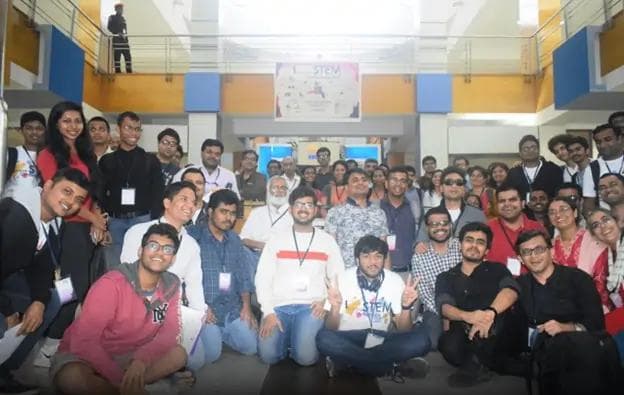Top 5 digital transformation pitfalls
Top 5 digital transformation pitfalls
Published by Jessica Weisman-Pitts
Posted on November 4, 2022

Published by Jessica Weisman-Pitts
Posted on November 4, 2022

By Richard Farrell, Chief Innovation Officer at Netcall
While 70% of organisations have already piloted automation technologies, many struggle to achieve the full potential of digital transformation, with less than 20% managing to scale across multiple parts of their operations.
Organisations often fall into the same common traps, so we have put together a list of the top pitfalls to avoid based on ours and our customers’ experiences.
Try to avoid these stumbling blocks for a faster, more seamless digital transformation journey.
Digital transformation is upending business and operational models. Facing this new reality, some leaders are trying to get ahead and dive full force into digitisation. This can lead to starting with overly complicated projects or prematurely implementing an automation across operations. Instead, organisations should start simple, then use that project as a case study for the rest of the organisation.
Kate Hurr, Senior Manager Digital and Customer Experience for Cumbria Country Council, said, “You just have to start somewhere and deliver something – it doesn’t have to be right, it doesn’t have to be perfect, it just has to be something that people can start to use”.
Some make the mistake of starting with a complex project to speed up their ROI and, while they can learn a lot, they can often find themselves encumbered in the sheer complexity of the project. By starting smaller, organisations better facilitate their team’s education on new tools. This newfound knowledge can then be applied to more complicated projects moving forward.
Organisations also tend to falsely assume they need to acquire extensive technical expertise for significant change. However, as Kate from Cumbria Country Council said, “You don’t have to build a development team with the obvious technical people. We built our transformation journey on the back of really good business analysts, with some technical support and oversight”.
Amid talent and skills shortages, organisations can still embark on an effective and personalised digital transformation journey using a Low-code Application Platform. An in-house development team can create software that connects systems and automates processes, that can be further enhanced with RPA and AI to unleash intelligent automation capabilities.
You can start small and build from there. Any organisation that embarks on this journey is going to make mistakes along the way, that is an unavoidable part of the learning process. The key is to learn from those mistakes as you move forward.
A strategy needs to be in place in advance for effective digital transformation. Without one, digitisation will likely lack focus and use resources inefficiently. Long-term goals along with shorter-term plans over a variety of time-scales should always be kept in mind.
Vicky Green, Digital Programme Manager at Ashfield District Council, said that starting without a blueprint led to a lot of confusion and a lack of direction. Having learned the importance of strategy on the digital transformation journey, the Council now works off a blueprint that considers where they want to be in three years and offers structure, purpose, and priorities.
Any strategy should be developed in consort with people across the organisation – especially those who will be using the newly implemented tools – because it is these people that will determine whether a solution is met with failure or success. Their feedback should be considered during planning and for determining what processes to automate.
By including colleagues in the building design process, substantial buy-in is cultivated and applications are tailored to what will most boost productivity and ease workloads.
This up-front work, ahead of any actual development or implementation, makes the eventual roll out of automations much smoother by helping prioritise what to automate first and avoiding the time and cost of reworking ineffective implementations.
It is key that organisations take the time to understand processes before they start automating them. As Anand Patel, Head of Technology & Innovation at Network Rail, said, “Sixty to 70% of the work is done before you start doing any coding whatsoever.”
Working with a partner or vendor can be an easy and cost-effective way to ensure digital transformation success and accelerate access to markets, talent, capabilities and technologies.
A committed partner with proven expertise and experience can help deliver impactful and tailored outcomes and achieve fast ROIs.
A partner with a robust low-code platform can enable your organisation to adopt a flexible approach that integrates well with your existing infrastructure and allows you to digitise at a pace that works for you. Such a platform can offer a range of advanced technologies like robotic process automation (RPA), artificial intelligence (AI) and machine learning (ML) capabilities, omnichannel communications, etc.
A suite of solutions and innovative partners allow organisations to create the automation roadmap that works best for them, maximising returns, better servicing customers or citizens, boosting productivity and relieving employees of excessive workloads.
All too often, organisations take too long to realise the importance of bringing your entire team along for your digital transformation journey, from the beginning. Digital transformation is a collective effort, which makes communication across employees and stakeholders essential.
This coordination makes sure everyone is working towards the same goals, avoids repeated mistakes, encourages learning and builds a culture of innovation. It also saves costs by avoiding double work and automation chaos.
Low-code empowers more people from your organisation to participate in the development process. Business users can be trained to be low-code developers, unburdening IT teams and speeding up digital transformation efforts. Communication between teams results in the most effective automation journey. Rather than relegating all development to a siloed IT team, business and IT should share the entire lifecycle.
For Waverley Borough Council, using low-code and partnering with a provider that offered learning resources enabled them to utilise and upskill their existing talent and engage in time-saving collaboration. Linda Frame, the Council’s IT Manager, said that such a platform empowered their staff to use and create what they needed.
By unleashing collaboration across your organisation, under the governance of IT, faster and more effective results are delivered.
We learn from our mistakes. The most successful organisations reward and embrace this mindset, realising that experimentation is a requisite for innovation and creativity. One review of teams at Google found that when employees felt they could take risks without shame or criticism for failure, they did better work.
This ethos fosters faster time to value because when workers are not worried about unattainable perfection, they iterate quicker and more often – and repeated iteration is the name of the game when it comes to digital transformation. Find your minimal viable product then start and improve from there.
“Don’t expect to be right the first time, iterate it. Because being right the first time costs you a lot of time. Instead, get feedback and incorporate real-world experience,” said Anand from Network Rail.
Explore more articles in the Technology category











